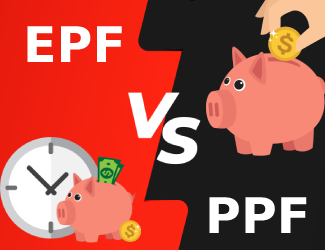If you’re looking for tax-saving investment options in India, the two most reliable names are EPF (Employees’ Provident Fund) and PPF (Public Provident Fund). Both offer excellent tax benefits under Section 80C, but they cater to different profiles and financial goals.
What is EPF?
EPF is a retirement savings scheme available to salaried individuals working in companies registered under the EPF Act. Contributions are made by both employer and employee, with the added benefit of employer contribution being hidden income.
Tax Benefits:
-
Employee contribution is tax-deductible under Section 80C
-
Interest earned is tax-free (if conditions met)
-
Maturity amount is tax-free
Ideal for: Salaried professionals looking for long-term, structured retirement savings.
What is PPF
PPF is a government-backed savings scheme open to all Indian citizens, including self-employed individuals. It offers a fixed interest rate and is ideal for those without access to EPF.
Tax Benefits:
-
Contributions are deductible under Section 80C
-
Interest is tax-free
-
Maturity amount is tax-free
Ideal for: Self-employed individuals, freelancers, or anyone looking for a safe, long-term tax-saving option.
Key Differences at a Glance
| Feature | EPF | PPF |
|---|---|---|
| Eligibility | Salaried employees | Any Indian citizen |
| Interest Rate | ~8.15% (subject to change) | ~7.1% (revised quarterly) |
| Lock-in Period | Until retirement | 15 years (extendable) |
| Employer Contribution | Yes | No |
| Withdrawal Flexibility | Limited before retirement | Partial after 5 years |
Which One Should You Choose?
Choose EPF if:
-
You’re a salaried employee
-
You prefer automated retirement savings
-
You want employer contributions as an added benefit
Choose PPF if:
-
You’re self-employed or a freelancer
-
You need flexibility and control over deposits
-
You prefer a government-guaranteed, stable return
Conclusion
Both EPF and PPF are excellent tools for tax saving and wealth accumulation. The best choice depends on your employment status, financial goals, and risk appetite. In fact, many smart investors use both to diversify their tax-saving strategy.
